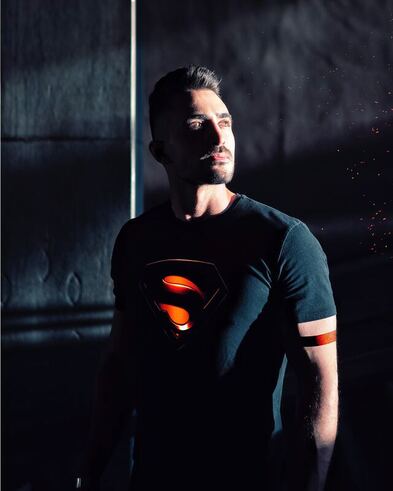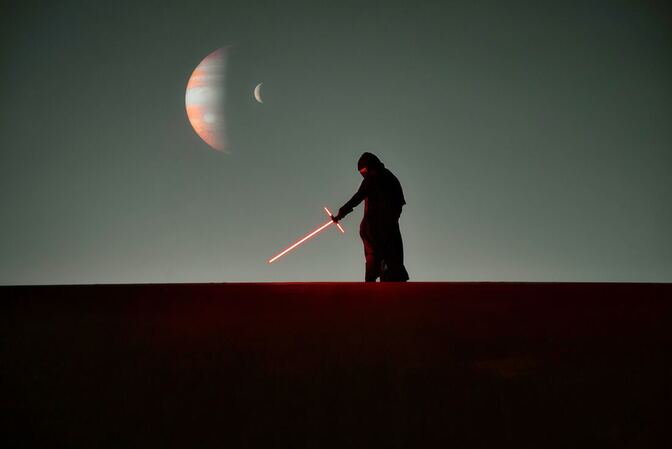|
Letters must be submitted before April 15th! Submit letters here: https://cara.fs2c.usda.gov/Public//CommentInput?Project=54965 Template below. Mr. Sando I am ___, from ____, and my relationship to the proposed control burn and clearing area is _______. There are a lot of red flags in the environmental assessment and proposal for the Encino Project, below are some thoughts highlighting them. The community has great concern for the proposal, first of all, because of the devastating effects of the Calf Canyon fire in our culturally significant neighboring villages and forests of Mora and Taos area. Our Cañones community and sister town of Abqiuiú (Phé shúu ú) would be greatly affected if this goes wrong, and the watershed of Cañones would be as well. A few initial questions: Has there been a drought assessment for the project? Has the media been contacted by the Forest service about the project? How many decision makers will there be for the proposal, will it be done by one person or a committee? Are there locals involved in the deacon making? It is my understanding that you are retiring soon, Mr. Sandos, are there others who can take the lead once you move on and pass the torch to them? What kinds of measures are in place for that succession? Here are a few concerns I want to put forward: Community: -The USFS needs to hold a listening meeting where it listens to communities like Cañones to gain and build further trust especially after the USDA forest service burned the historic village of Mora with their “control burn” operation. -There needs to be one in Cañones, and members of the teams should get a sense of acequia and land grant knowledge. Watershed: -There is more thought and attention is given to mitigating trail user impact along the Continental Divide Trail (CDT) than the entirety of the Cañones Creek watershed that will impact an entire traditional community. Considerations such as notification timelines, point of contact, provision of alternate route, etc are included for the CDT in this EA. Meanwhile, the Cañones Creek watershed analysis is not done, and no intention of community notice, engagement or provision of alternatives is considered. -There should be protections in place for cultural and historic villages and people near the project. -There should be improvements with relationship between local people in place between Forest Service and historic villages. Cañones Creek impact: -Many agricultural families and communities might be affected by watershed issues for potentially years and this is UNJUST for impoverished or low income minority families and Genízaro/Chicano/Mestizo communities such as ours. Tree harvesting: -If there are concerns for budget and staffing, why not create trainings for community members to clear out forests as an incentive to logging proper trees. There are ways to work with locals that don’t keep them out, rather help them improve their own incomes and small logging sales. -Vigas and latillas as, trees with small diameters are a viable tree-harvesting options for locals. -There needs to be more incentives and area for smaller companies and contractors who can cause less damage with smaller equipment. -We want codified policies to ensure smaller tree harvesting and fire wood extraction by locals can be done by locals. - Over again, SFNF plans and this draft EA claim an intent to provide access to culturally important resources to traditional communities. However, SFNF has no policies or procedures in place for ensuring or providing this access. -Local understanding -There is at least 1 known historic structure in existence near the Cañones Creek near the Magote. Is this historic structure known to SFNF? -The analysis in this draft EA relies heavily on modeling, this is lacking data. Very few of the subject matter experts offered for public interaction have visited the project area. Local communities have not been consulted to be on committees. -The analysis indicates acceptable impacts to local watersheds that are in fact absolutely unacceptable to local community and traditional ways survival. -Is this project modeled after places like Oregan, where many people involved in this project are from? Do they know it’s a much different climate and environment here? - Local observations indicate more frequent and more intense wind events over the past 2 years, relative to the past 40-50 years. Do the models being relied upon for decision making accurately reflect this? -The relationship between the community of Cañones and the SFNF has been challenged for a long time. -The SFNF needs to hold not just a community meeting, but a listening session with the community, allowing project staff to hear about local history and learn from relevant traditional knowledge. The subject matter experts made available to the public at a project public meeting had never heard of a land grant or an acequia. This information is in the SFNF Land Management Plan, which should be required reading for staff. How can people from out of state work on this project without consulting or getting to know local knowledge and input? How can this project move forward without local knowledge and input? How can it move forward without the opportunity to learn the fundamental elements of our community? -SFNF was told in public comment that many Cañones community members primarily speak Spanish. However, project materials have not been readily provided in Spanish, and the notification they are available by request is only embedded within the English language document. This erodes the relationship with traditional communities as Cañones is a Spanish land grant, carrying our language forward as a primary feature of our culture and heritage. No community meetings have been offered in Spanish. - The EA acknowledges socioeconomic challenges of our community includes lower access to vehicle transportation and lower income. Yet, the few community meetings offered were in Gallina and Abiquiu, with no virtual option. -No meeting was offered in Cañones, home of renown poet Jimmy Santiago Baca, acclaimed photographer/filmmakers, Doctors, Engineers, Genizaros, Chicanos, Mestizo people, teachers, LANL workers, government employees, military people, voters, and culturally significant structures and ranches. -Also, the draft EA presumes that short-term disruptions to forest resource access will be mitigated by users going to nearby alternatives. Nothing is readily accessible nearby as this project area is huge and resources in the southern Jemez are already more saturated. Not to mention the smoke that the fires would create that would negatively impact workers/contracters in nearby forests. -Local residents, especially traditional community members who carry generational knowledge about the area should be included in decision making, planning and data input collection. Current USFS and SFNF plans, reviews and policies state that incorporating the experience and knowledge of historic communities and building relationships with them is to the benefit of programs, outcomes and the Agency. -A local traditional community member or members should be part of the team for all burn plans, specifically the Appendix C - Prescribed Fire Plan Template, Element 2A, including drought awareness and variations from expected conditions, and Element 2B Go-No Go, Item A. -How can local communities contribute to building reliable data sets to improve modeling output? -Many local residents had small timber operations in the past, and still hold local area and practice knowledge. Some of these people could be good resources to augment the small and overstretched SFNF timber products staff. I encourage you to go through your records of loggers who have obtained licenses in the area. Creating incentive for them and proper trainings could help aid the staff. -Reference comment above regarding local marketability of timber products <12” diameter - This draft EA analysis assumes only sawlogs are valuable and that there are primarily local operators who will benefit from them. Again, this is not Oregon. Here, we commonly use the small timber products to build our homes, outbuildings, fences and other structures. This is part of our cultural heritage. In fact, an entire home building and landscaping industry in Santa Fe and Albuqueruqe relies on this seller timber and locals could benefit from this market! -The staff should experience road 100, and get to know locals in more community forums and events and listen to our input. I hope that you will address some of these concerns and questions that I’ve brought to your attention. Thank you, Salazar
0 Comments
Our attention is being hijacked at every turn with social media, phones, scrolling. I'm ready to make changes.
I was at a beautiful flamenco show, and during the show something really bothered me. At the National Hispanic Cultural Center, during the sacred performance of the live theater, several people took out their phones and began recording and taking pictures. No one made an announcement beforehand asking people to put their phones away–nor did they need to or have to. These are grown adults, who “should know” better, right? The phones took me out of the performance, and it certainly took the phone users out of it. As I’ve thought about it more, there are larger forces at fault than the average user, we are all being hijacked by these technologies. I have a few thoughts: What do people do with all the videos and pictures they take? Do they ever once go back and look at it? I’m truly asking this as a photographer who does this for a living. As a photographer, making the conscious decision to put your camera away is just as important, if not MORE important than taking it out to take photos. Asking the questions, “does this event or does this subject want me to or need me to photograph it right now?” really are crucial to me as an artistic photographer. Consent is so crucial. Even when I’m completely in public or even when I photograph people who totally allow me to do so in a session, I still go through important questions about permissions and ethics in my mind. Taking your phone or camera out to take a photo can sometimes totally take you out of simply enjoying the moment. Whether it’s live art, the sunset, or even the loved ones around you. Our focus would be better served by being present. We are being hijacked. Meta, Facebook, Instagram, Google, their entire business model feeds off of how long we can stay addicted to their apps and algorithms. How long we scroll is good for their business. They are hijacking human behavior and our brains to get us to be addicted. (Source “Stolen Focus” by Johann Hari.) The reason the phones bothered me so much is that dance and theater is the opposite of the surrogate world of social media and the internet. Dance is by nature interactive and social at one of its highest forms. Moreover, I regard the theater as a sacred space where technology and phones should be switched off out of respect for performers and those around all of us in the audience. Another reason it bothered me is that it’s not even our fault, the consumer in many ways. I am just as guilty of using my phone at the worst possible moments, when people are talking to me, when I’m at a social funcion. The technologies we are using are programmed to get us addicted, programmed to persuade us to use them and take our attention away from the things that matter most. I’m making changes I really am committed to making changes, I am against Meta (facebook) on so many levels and I’m working on building better resources for my portfolio and marketing that don’t rely on social media so much. I still run social media for a few businesses, and I do think there is value in that, but even then, I hope we all can move off the platforms one day. I think it’s entirely possible to use it extremely sparingly or not at all, concentrating on email lists, and our own websites for news and updates. I even have a grand vision of sending out an actual print-art newsletter that avoids social media altogether. (Comment or email me in my contact if you’re interested) We will see what happens, but for now, I really am committed to making changes. I don’t know how long it will take to completely move off of the socials, or even away from so much phone use, but I want to replace all of this time with more constructive outlets. I may buy a dumb phone again, an actual notebook and an actual small camera to carry with me instead of a phone. I may just talk to people and ask for directions more, we will see. I don’t know what it fully looks like, but changes are necessary for me especially with all that I value and hold dear as an artist who is committed to strong community building in culture and in dance. Recently the new Blue Beetle trailer came out and while it looked cool enough, it didn’t excite me the way these things used to in the late Nineties and 2000’s when I was a teenager desperate for superhero and fantasy action. There have been a lot of superhero films released this past year and while one or two have been pretty good, most have been forgettable. I fell asleep during Black Adam, and I didn’t bother going to Shazam 2, a rare instance that I miss a superhero movie. Back to the Blue Beetle trailer–As a Latino moviegoer, I was excited to see a movie with a Latino lead and family at the center, but the trailer didn't seem to do enough to make this stand out. Instead, they leaned into the transformation of Xolo into Blue Beetle in all of its visual effects glory; this is something we’ve experienced in every superhero film, something we know, something we’ve seen. There are still many reasons to believe that this one can be a good movie; there are plenty of trailers that come out for films that I haven’t liked, but I’ve enjoyed the film. For now, it just looks like just another mediocre superhero film in a string of ordinary superhero films. Hopefully I’m wrong.  unsplash.com/@24ameer unsplash.com/@24ameer Let’s take a look at what sets a superhero film apart and how to beat the fatigue that comes with release after release of the same movie. As I understand it, superhero movies are what Westerns and musicals were like in their heyday. They were the genre that worked best for everyone, so Hollywood pumped out more and more films even if they weren’t great. James Gunn, head of DC, recently pointed out that there is indeed such a thing as comic-book fatigue as a few outlets report, including Variety.* He points out that what we are sick of is seeing the same old stories, not necessarily that we are sick of superheroes. There has been a lot of dialogue from a lot of pundits in the online space and even Marvel’s Kevin Feige chiming in on “Superhero Fatigue” agreeing or disagreeing with audience sentiment, and it seems like Gunn finally just admits that it’s here. 1. Diverse stories bring something new to the silver screen. You won’t hear me stop talking about diversity, it’s not just about representation. It’s good business, and it brings unique and fresh stories to the forefront after years of the same old content that we’ve all seen before— when it works, the numbers and box office goes up. NALIP reports that 23% of moviegoers are Latino. Wakanda Forever is a great example of a story driven by a more diverse cast in the Marvel cinematic universe. While I’ve talked to a few Chicanos, and mestizos that struggled with the way that the Mexicans are portrayed as villainous even as they are living out the effects of colonialism and mass genocide, at least there was a portrayal with some motivation that made sense. (Personally I think Namor was portrayed as overly unreasonable, but that’s a different discussion). The entire film centered around grief and loss while dealing with the challenges of colonialism between two nations–a complicated thing to see on the screen, but a plot device that brings something more fresh to a comic book film. The trailer for Blue Beetle could have emphasized the Hispanic element and family dynamic to make the movie stand out from other superhero films. (again, the movie might still do this, I only have the trailer as a reference) The film would benefit from playing on Hispanic antics in familial settings and the reactions that would ensue, and how that would affect the mom, dad, abuelos with cultural significance at play. See My Big Fat Greek Wedding–a movie about culture clashing and a romantic comedy. A similar concept could be applied to the Blue Beetle sequels but with the use of a superhero genre. An important note on diversity: It’s always best to work with consultants within the culture to portray characters, cultures, and stories from diverse backgrounds accurately so as not to appropriate. It also benefits those artists/writers/storytellers so that they are the ones earning from the projects. 2. Ground the story more in reality, lean into the ordinary and the extraordinary will soar. What makes this feel more grounded in reality is that it is relatable. Logan provides a great example of grounding a superhero story in reality—it focuses on an aging Wolverine caring for a sickly Professor X. The mundane struggles in Logan make the extraordinary moments all the more impactful and memorable. By this point, we know the X-Men universe–they are mutants, we get their powers, we can leave behind the “how they got their powers montage” and just focus on dying out mutants and their persecution–something that is unfortunately relatable by today's standards. (Mutants are a glaringly obvious metaphor for the LGBTQ+ community for those who still haven’t caught on or catch on but choose to not care.) Grounding these stories in reality helps us relate–it’s why we all love Spiderman, the guy who is a nobody, bullied, just wants to enjoy high school or get through college. Contrast this with Ant-Man and the Wasp: Quantummania in a Quantum universe that doesn’t seem at all feasible, with contrived societies that are attempting to be framed as another universe rather than the “quantum realm.’ Quantumania abandons much of the world building it did in previous installments featuring the quantum universe making its underworld hard to decipher for viewers. (Also, the Wasp hardly has anything to do, why is it “Ant Man and the Wasp” again?) I digress, but had to just bring that up for a second. 3. Infuse a story, plot convention, or genre into a universe. (Heist, prison break, lost at sea, western.) According to Robert Meyer Burnett, the key to creating successful franchise films, superhero films, or Star Wars films is to start with a strong, emotionally resonant story and set it in the existing universe. A great example of this is the Andor series; a show about standing up to tyranny and imperialism, and the effects of colonialism, dehumanization, and human trafficking. The main heart of it is the characters, Andor’s relationship with his mother as someone who takes care of him after his planet is colonized and the effects of him being a fugitive. So much of this story could have taken place outside this universe and it would have worked anywhere, and even as a stand-alone non-franchise film, but it was set in Star Wars. In conclusion, more characters grounded in a relatable reality, less explosions. (Am I turning 34 and just crave dialogue and tension more or is it all just getting boring?) Action is better when there is a character and story driven purpose behind it. Diversity brings new and unique stories, which is something we are all desperate for when going to the movies. If there are going to be explosions, let them be driven by strong story, emotional arcs, and character development that pays off. *variety *Burnettework  Photo by Aaron Burden on Unsplash Photo by Aaron Burden on Unsplash Creatives! So you’ve got a big idea? Now what do you do with it? Maybe more than one! First of all, I want to make it clear that all of your big ideas are valid and matter in some way or another. Too often, I run into people who have been shut down so much by others that they no longer feel confident in their own creativity. We can literally do something with ALL ideas, believe it or not, and I want to share those steps with you. The thing you want to do with creative ideas is:
Can’t do the idea now? Skip to step 5 after you’ve captured your big idea(s)! I tend to keep two physical notebooks, and one on my phone. There is my journal where a lot of my thoughts come up, my separate daily to do notebook which also has room for brainstormed ideas and creative thoughts, or I write down my to dos/thoughts on my phone notes. Capturing your thoughts leaves judgment out of it, it allows your mind to flow into something worthwhile. It’s loving all of these little gems that might eventually spark into something. Sometimes, even while I’m working, an eruption of thoughts about how to market the business, where to go in a story, and I’ll just have to take a second and write a bunch of notes, or sketch out a concept on one of my two notebooks. Capturing is key, it empowers everything and allows for every possibility. Capture as much as you can if you feel excited and good about an idea or concept. Sometimes, even if you feel mediocre about a concept, something can come of it! 2) Get Started So you have a little time right now. Do a messy, sh*tty, bad 1st draft. Don’t worry about it being perfect, in fact, the less perfect the better. Getting your thoughts out on paper, on screen, on napkins, is what matters most–whether it’s a sketch or a few paragraphs. 3) Create Suppose your idea is actionable and doable today, especially if it won’t take too much time. Or suppose your big idea is an urgent step that your business, your heart, or your community needs. This is the step where you take your first draft and keep going with it! I will talk about the nitty gritty of the creative process later on, but for now, once you have a 2nd draft of something, refine, test or get feedback, and iterate the drafts until they are right. You may have to look over your drafts a few times–expect to do several revisions, it is just part of the process. Revisions can be some of the most tiresome stages, but they are the most crucial–think about the end result and how everyone will love your script, art piece, poster, photo edit etc at this point when you’re refining! 4) Delegate If you love the idea, and you can’t get to it now but you work on a team, communicate the concept to a team member and see if they can carry out the task for you. Example: I have this idea of an Instagram post that will reach people–can you capture a photo and work on that post this week and post it by Thursday? Or “We need a poster for xyz, can you generate a few concepts?” 5) Schedule For complete follow through we need dates and deadlines with steps to get there. This is for when you can’t get to it today, tomorrow, or even by the end of the week. But you can get to it next Tuesday at 1 pm after lunch. Put that in your calendar and make it a priority so you stick to it. When Tuesday rolls around, this idea gets all your attention and you can go through the creative process. In Conclusion Now that I’ve shown you what to do with your ideas, where to put them so they don’t get lost, I hope you can take this and capture all your ideas and put them somewhere in your life whether it’s on your notebook, calendar, or on your team’s to do. Ultimately, the creative process different for everyone, this is just something I’ve discovered to keep my ideas easy to get started on. Never stop being a messy, crazy, creative. I think I may have found the best Creamy Green Chile Soup in town. Coming from New Mexico, it is without a doubt that everyone’s abuela or tia makes a mean green chile stew/soup. But if you’re looking for something at a restaurant that is authentic, and mouthwatering, look no further than Chumlys Southwestern. Order their Creamy Green Chile soup. https://www.chumlyssouthwestern.com/ Chumlys joins its community of restaurants, shops and a brewery in theGreen Jeans Farmery center just off of I-40 and Carlisle. The perks of this community: you can easily mix and match some great beer from Santa Fe Brewing Company with Chumlys Southwestern, and maybe take a yoga class or grab a T-shirt all in the same day. For Jesse Zimmerman, one of the founders, Chumlys Southwestern is a story that is 26 years in the making. “It all started in ‘93 with our first restaurant in the Uptown area, it was called ‘505 Southwestern.’” Then he and his business collaborator, Roy Solomon, formed another familiar favorite, “Baileys on the Beach” on Central. “We moved to Green Jeans and started out as ‘Soup Dog,’ but changed the name to really make our food stand out more. It is the southwestern flare that defines us, almost everything has chile. We haven’t changed that green chile recipe since ‘93 because it is just right!” Enjoy a taste of the southwestern flare at Chumlys Southwestern if you are looking for something that encompasses and defines the New Mexico foodscape. Over 20 years in the making, the recipes have been perfected, the legacy continues, and the creamy green chile soup is the best there is. Don’t visit Albuquerque or “Green Jeans” without trying it. It’s a must. 4 Great Dishes to Order at Chumlys Southwestern: 1) Jesse shared some of his favorite dishes with me while I visited. Including a bowl of homemade potato chips with queso mixed in-house (their Famous Tater Chips and Queso). The chips are spiced with a fusion of spices and red chile that make the dish pop, ideal to share with some friends at Green Jeans. 2) The Blackened Chicken Quesadillas are a great find: if you want some foodie advice, try dipping them in any of the soups or queso and the palate of southwestern flavors will unite with flare. Available on corn tortillas for gluten-free eaters and infused with a mildly spicy dijon mustard. 3) Look for a tasty minestrone if you are not yet adding chile to your palate. Made without chile, the soup is a great dish to pair with Chumlys’ quesadillas or signature sandwiches. 4) The creamy green chile soup is also available without a cream base, for those with dairy sensitivity, and it’s no less delicious than its creamy counterpart. |
Andrés SalazarPhotos, Headshots, Short Video |


